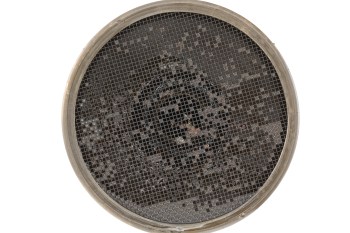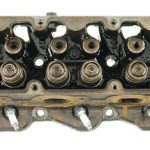Is an Engine Flush Good or Bad?
To flush or not to flush.
It’s a question whose answer is obvious in the bathroom, but vigorously debated in the garage.
Let’s get right to the point. Is it safe to use an engine flush in an engine with high miles? Spend a few minutes perusing online forums and you’ll find a range of answers to this question, often involving a 1980s Trans-Am, Camaro or other car that someone thrashed on for years, parked in a pasture for a decade and now wants to revive with an engine flush.
What is an engine flush?
An engine flush is an aftermarket chemical additive designed to clean accumulated deposits, sludge and other gunk from your engine. You pour it into your engine’s oil-filler port and idle the engine for about 10-15 minutes. It mixes with the oil and circulates through the engine, helping dissolve sludge and clean deposits. Then, you drain the oil (along with much of the gunk, in theory), change the oil filter, add fresh oil and return to the business of driving.
How deposits and sludge form
If it did its job, your engine’s performance will return to the heady days of its youth, when it delivered maximum power and efficiency. Over time, however, harmful deposits and sludge may have accumulated, causing power and performance loss.

The tiny openings in the oil pickup tube screen can easily plug with sludge, starving the engine of oil.
Deposits and sludge can form for several reasons, including frequent short trips that don’t allow the oil to fully warm up and evaporate moisture, the ingestion of air-borne dirt, fuel dilution and high heat breaking down the oil. As it settles, sludge can clog narrow oil passages or the screen on the oil pickup tube, restricting oil flow to vital parts, especially the upper valve train. Deposits can cause the rings to stick, reducing engine compression and horsepower.
Is an engine flush necessary?
A good engine flush can help loosen deposits and dissolve sludge, returning your engine to like-new condition. However, in old engines with high miles, sludge may be the only barrier keeping oil from seeping through worn or cracked seals. Removing the sludge exposes the seals for what they really are – junk. Soon, your engine begins leaking oil, and you’re mind instantly associates the engine flush product with an oil leak.
In reality, the seals were already bad; the flush simply revealed their true condition.
If you suspect your vehicle falls into this camp, leave well enough alone and skip the engine flush. It’s probably not worth trying to revive an engine in such poor condition without first fixing the bad seals or other defects. In effect, you’re choosing your problem: either sludge and deposits robbing performance or, if you clean the engine, the seals showing their true condition.
Part of a good maintenance regime
But that’s not to say an engine flush is never a good idea. In fact, it’s often the first step in helping restore a neglected vehicle to top-notch performance. And, often when you buy a used vehicle, that’s what you’re getting – a vehicle whose owner found antiquing on Saturday afternoon more enjoyable than changing oil or dropping the transmission pan. Consequently, your “pre-owned” ride, while not complete junk, may boast a sketchy maintenance record.
In these cases, a potent, detergent-based flush can help prepare the engine for new oil, loosening sticky valves or rings and helping remove harmful sludge. While not a required step when switching to AMSOIL synthetic motor oil, we do recommend flushing your engine if you want to give your vehicle a fresh start.
Some people also claim an engine flush will free large chunks and cause an avalanche of debris to clog passages inside your engine. Don’t worry. AMSOIL Engine and Transmission Flush cleans at the molecular level, ensuring the deposits are dissolved and properly exit the engine with the oil when it is drained. This helps the new oil get off to a “clean start” and perform to its engineered capacity.
Local note:
Never use solvent based flushes. You can spot these because they will have some level of flammability. The AMSOIL product uses a unique detergent which will not destroy the oil base and cause scoring like common solvent based flushes under various popular names.
Testimonial time
For the record, I’ve used AMSOIL Engine and Transmission Flush on three different pre-owned vehicles in my time, and it’s worked great. One of them, a 1999 Honda CR-V, has 206,000 miles on it and still runs like a top without burning hardly any oil. Another, an Oldsmobile Intrigue, ran great until a computer problem forced me to trade it off…for the CR-V. The third I sold to my fellow blogger, Ed Newman, for $500 and a telescope. Last I heard, it still ran well, but rust was getting to it.
He may have parked it in a pasture behind his house.
In sum, flush your engine if you want to give your vehicle a new lease on life. AMSOIL Engine and Transmission Flush, as the name indicates, also works great for cleaning automatic transmissions. But if you have any reservations about disturbing sludge or deposits that may be holding your old, high-mileage engine together, consider skipping it. It’s up to you.







